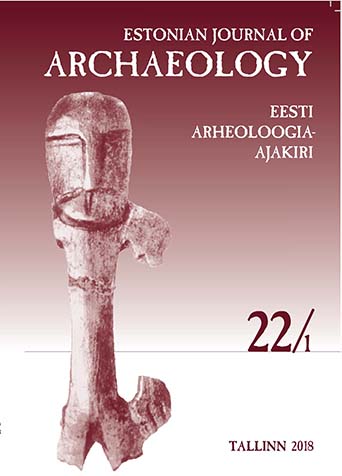MANUFACTURE TECHNOLOGY OF SOCKETED IRON AXES
MANUFACTURE TECHNOLOGY OF SOCKETED IRON AXES
Author(s): Ragnar Saage, Karmo Kiilmann, Andres TvauriSubject(s): Archaeology
Published by: Teaduste Akadeemia Kirjastus
Summary/Abstract: This study analyses socketed iron axes of the first millennium AD. It was a widespread phenomenon that the first iron axes greatly resembled their Late Bronze Age counterparts. However, in north-east Europe, socketed iron axes continued to be in use far longer than in other parts of Europe. The Kohtla weapon and tool deposit contained about 100 axes, out of which one specimen was selected for invasive metallographic analysis. The axe was made from four separate components: firstly the bulk of the axe that had been made from a rolled tube; then the steel cutting edge; then also a wedge shaped filling in the blade; and a slag-rich filling in the socket. As the axe turned out to have undergone quite a complex forging technique, experimental production of the same type of axe was undertaken to better understand the reasoning behind the ancient smiths decisions. The experiment revealed that the two fillings served several purposes and that the choice of materials by the Iron Age smiths was well suited for the function of these parts. When the Kohtla axe was compared to the other axes, it became evident that the same results could be achieved with different forging patterns. In the future, the manufacturing technology could be the basis for improved typological and chronological characterization.
Journal: Eesti Arheoloogia Ajakiri
- Issue Year: 22/2018
- Issue No: 1
- Page Range: 51-65
- Page Count: 15
- Language: English

